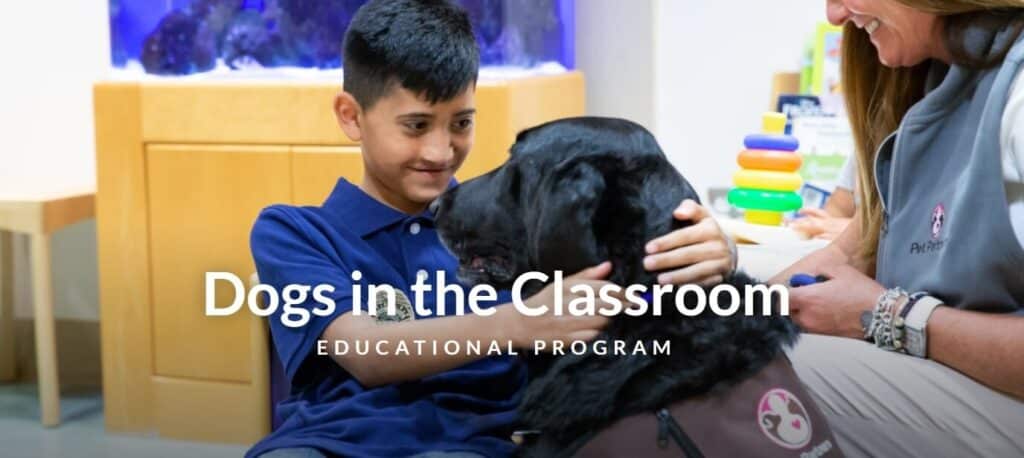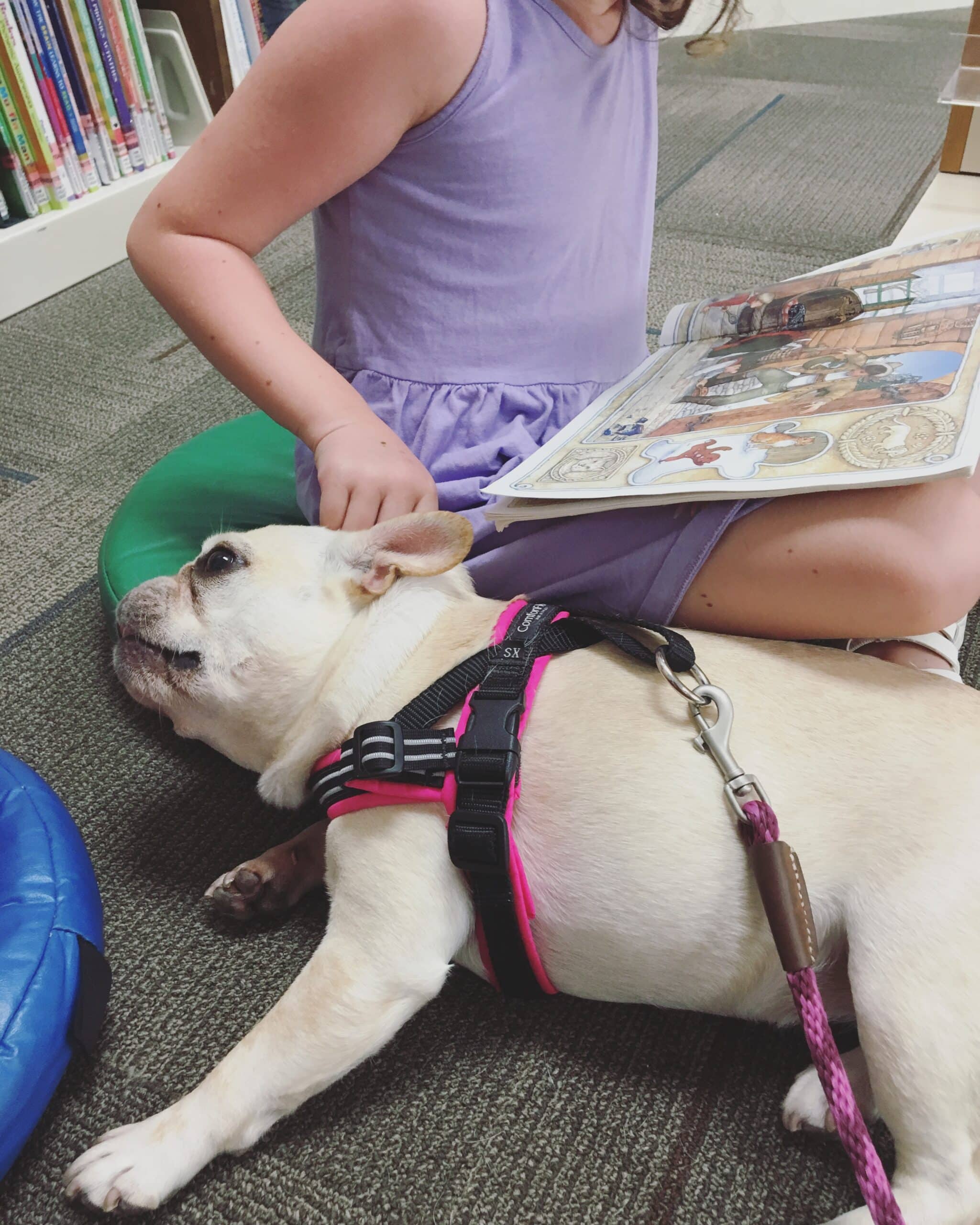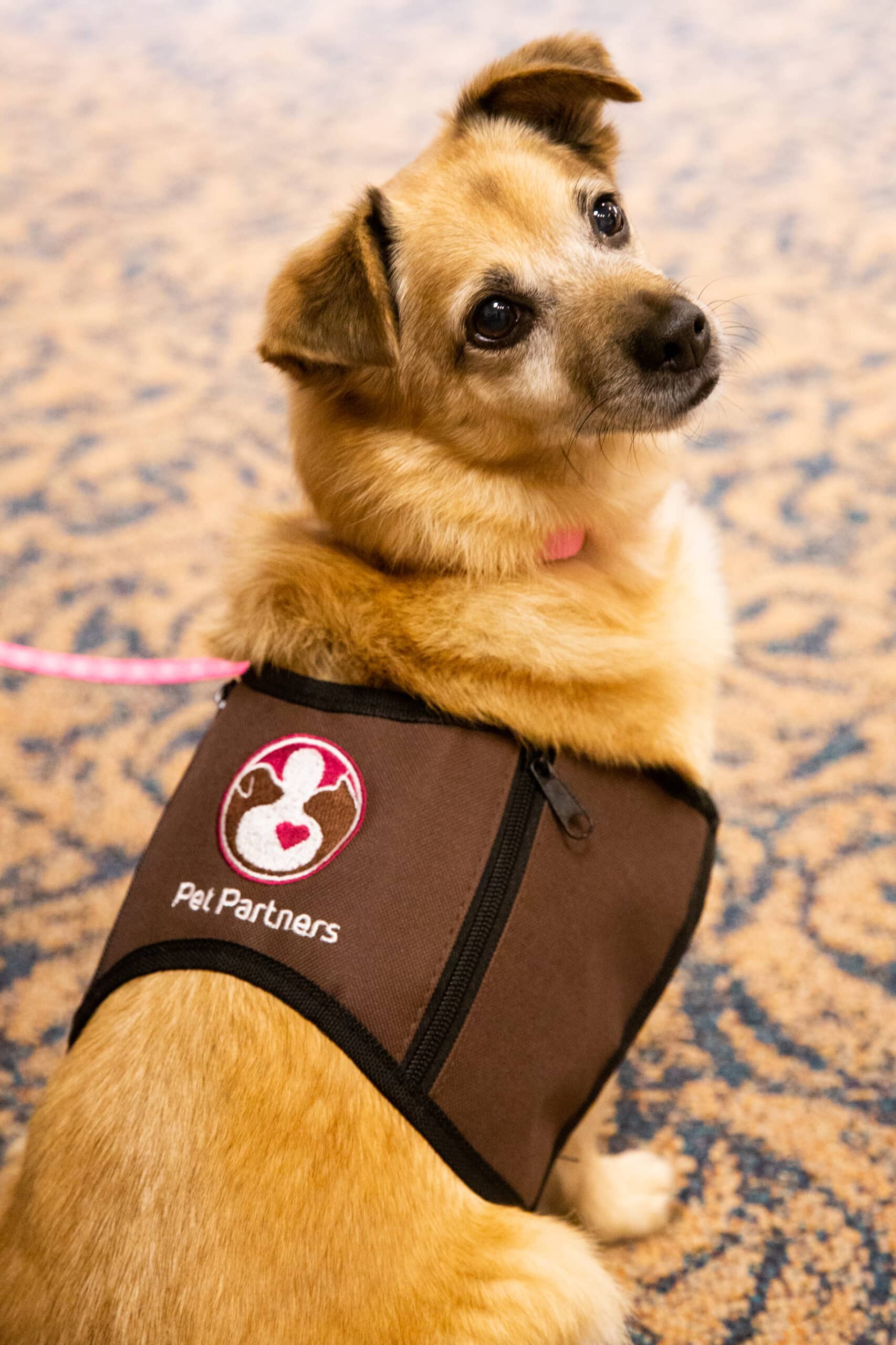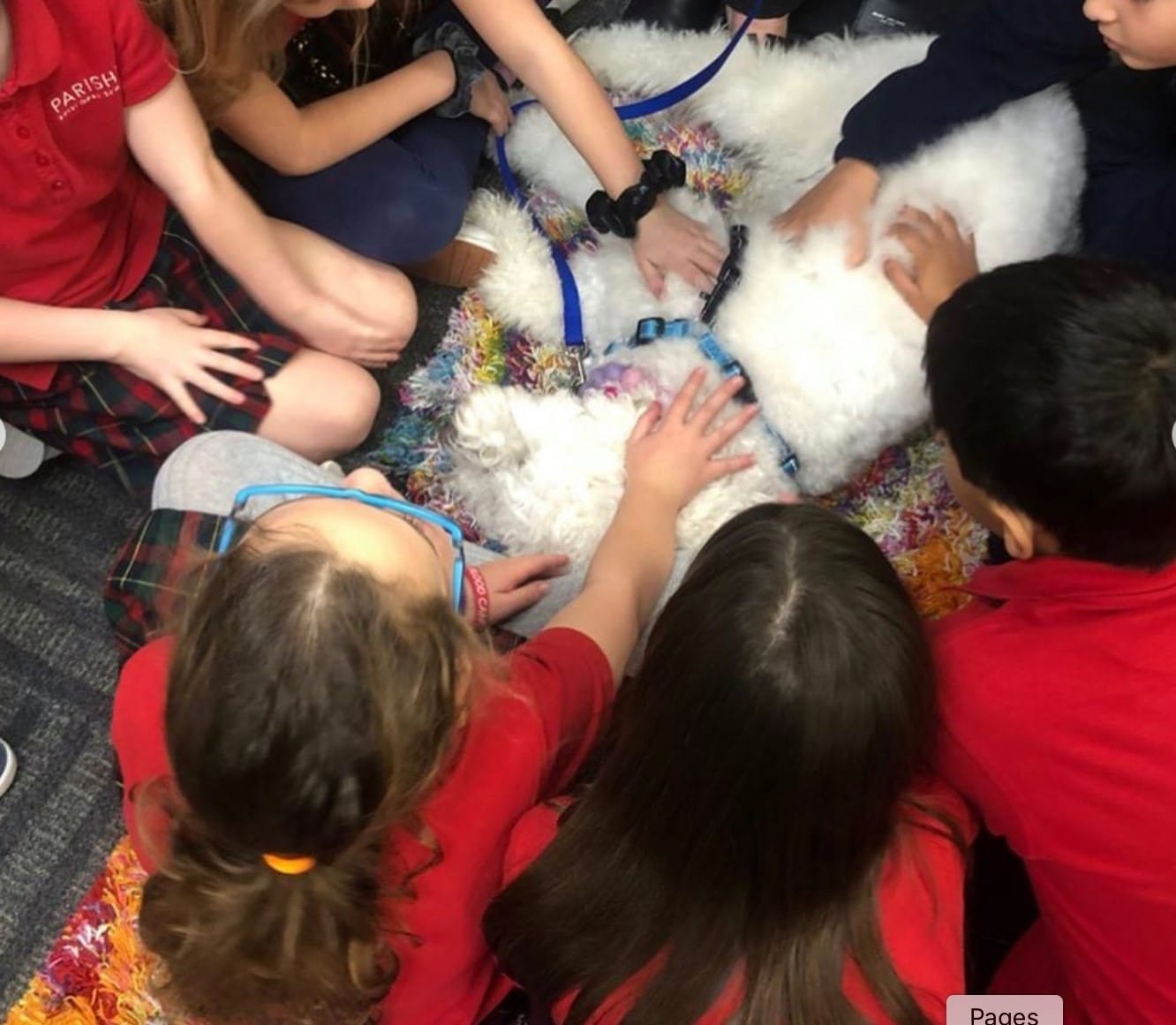



Pet Partners has long supported the benefits of animal-assisted interventions for students and in classrooms. We’re always seeking opportunities to bring these benefits to more classrooms and provide more students with the effects of the human-animal bond.
In October 2021, we partnered with The Pet Care Trust, a nonprofit organization whose mission is to enhance students’ educational and personal development through interaction with pets in their classrooms, in launching the Dogs in the Classroom program.
The pilot program will provide interactions with registered therapy dog teams in approximately 100 classrooms in select markets across the country, helping more students experience the benefits of the human-animal bond. The pilot, which is running through the 2021-22 school year, will allow the program to prepare for expansion to more classrooms in future school years.
The Dogs in the Classroom program is designed to bring well-trained and thoroughly screened therapy animal teams to select schools in an effort to improve the health and well-being of students. The program is providing 100 teachers with therapy dog sessions throughout the 2021-22 school year.
Teachers who are interested in taking part in Dogs in the Classroom are encouraged to establish goals for their work with therapy animals. There are several areas to focus on in setting goals:

Teachers should also develop policies and procedures for the therapy dog team visits. These visits are voluntary activities, so students and families should have a way to opt out of the visits, and teachers need to be prepared to address concerns about allergies and fear or dislike of interacting with dogs, as well as questions about potential infection or injury concerns. Teachers should also make a plan for logistical needs, such as informing students and families about therapy dog visits, as well as how the therapy dog team will enter and exit the building for visits and where the dog can go for bio-breaks.
Once matched, teachers and therapy dog handlers should work together to prepare for visits. The handler can provide information to the teacher about Pet Partners requirements and policy, to help with any questions or concerns about safety. The teacher will need to provide logistical information to the handler, and it can be useful for the handler to make a visit to the school without their therapy dog to prepare and discuss any potential logistical concerns. And the teacher and handler can work collaboratively to plan interactions, based on the teacher’s goals for the therapy dog visits, as well as holding post-visit debrief sessions to fine-tune visits and interactions.
More information about participating in the program is available on the Dogs in the Classroom Program Information page.
As of February 2022, the Dogs in the Classroom program is being offered to Pre-K through 12th grade teachers in the following areas:
And more areas will be added soon, so that more teachers will have opportunity to take part in this program.
Teachers in these areas who are interested in participating can apply on the Dogs in the Classroom website.

Pet Partners will manage the recruiting for therapy dog teams when requests are received through the program application. If you’re a Pet Partners therapy dog handler interested in this program, you don’t need to do anything—we’ll contact you if there’s a request for teams in your area.
There are numerous benefits of the human animal bond. Here are some that are commonly cited as beneficial in school settings:
There is more detailed information about research on these benefits on the Dogs in the Classroom Research page.
For a high-level look at theories about the process of why animal-assisted interventions work, see our blog post.

As of February 2022, 54% of teachers who have signed up for Dogs in the Classroom have connected with a Pet Partners team and had a visit.
These teachers gave Pet Partners handlers 5 stars for scheduling and communication, and give the program overall a rating of 4.8 stars. This demonstrates that teachers are seeing positive developments from participating.
One teacher said, “My class loved the interaction with Buster and asked many questions about him. They really enjoyed the visit and can’t wait for the next one.”
Pet Partners is excited to be working with Pets in the Classroom on this pilot project and demonstrate how teachers can work with registered therapy dog teams to support their students through the human-animal bond. We look forward to the results of the pilot, and to expanding to more classrooms in the future.